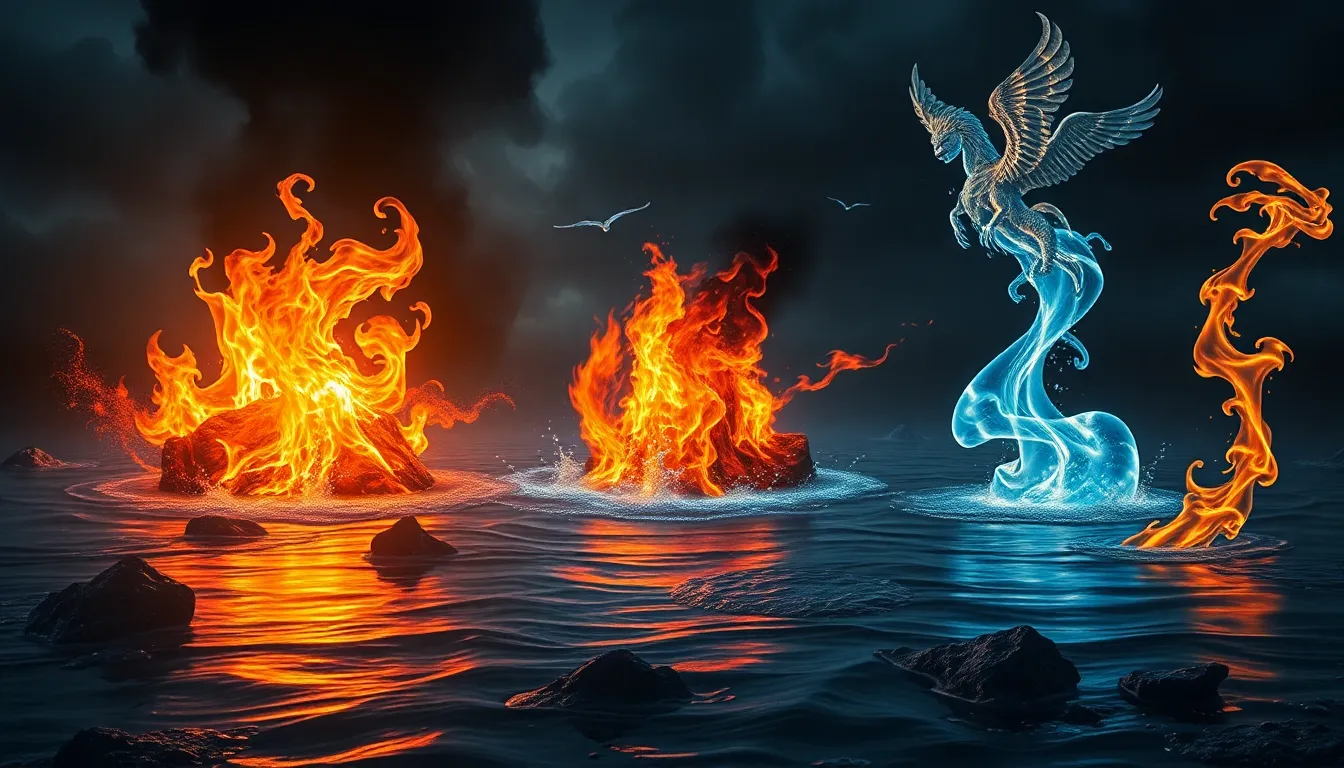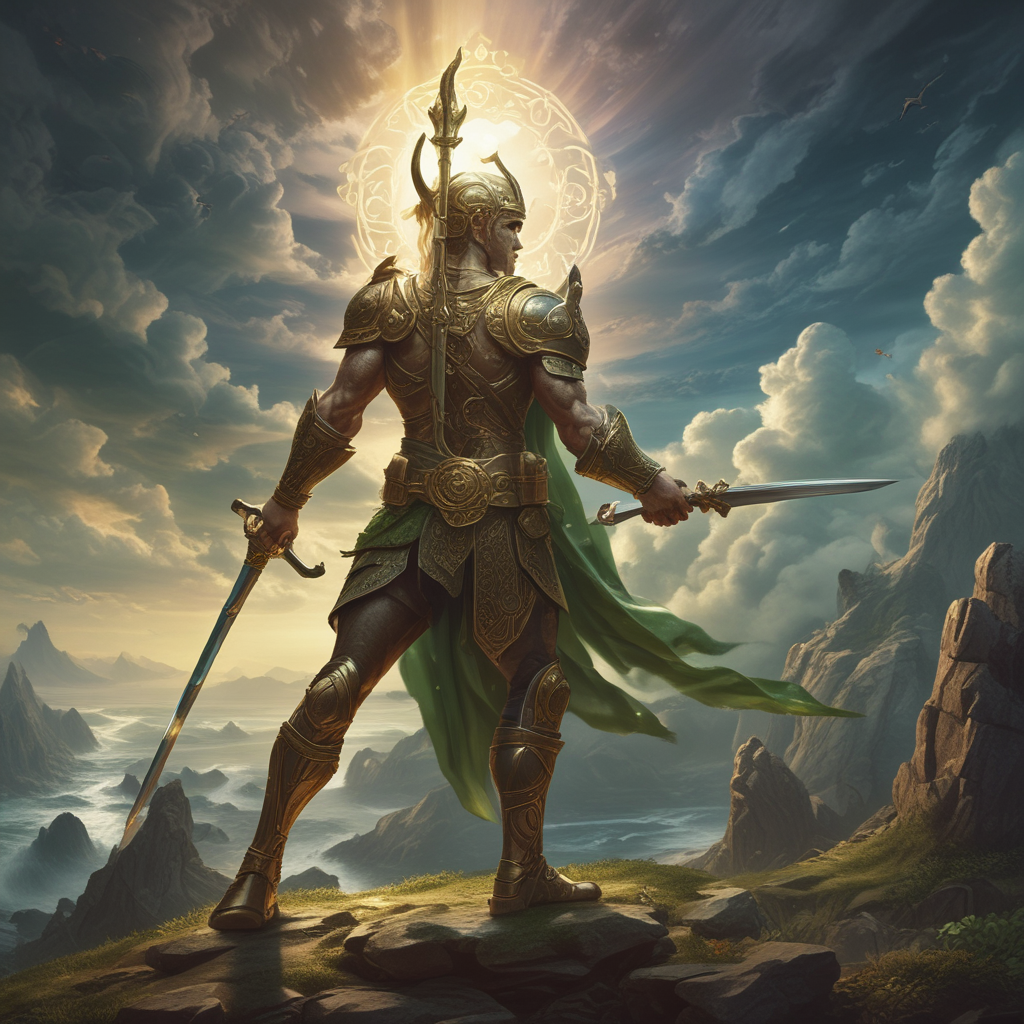The Sacred Elements: Earth, Water, Fire, and Air in Mythology
I. Introduction to the Sacred Elements in Mythology
The concept of sacred elements—Earth, Water, Fire, and Air—has permeated various cultures throughout history. These elements are not merely physical substances; they embody profound symbolic meanings and have played crucial roles in the creation myths, deities, and spiritual practices of numerous civilizations.
Understanding the significance of these elements in different mythologies allows us to appreciate their impact on cultural narratives, spiritual beliefs, and the human experience. This exploration reveals how these elements shape our understanding of the world and our place within it.
II. Earth: The Foundation of Life
Earth is often viewed as the literal foundation of life, representing stability, nourishment, and fertility. In many mythologies, Earth is personified as a goddess or deity that embodies these qualities.
Symbolism of Earth in different mythologies:
- Greco-Roman Mythology: Gaia (Greek) and Terra (Roman) symbolize the Earth as a nurturing mother.
- Indigenous Mythologies: Many Native American cultures see Earth as a sacred entity, emphasizing respect and stewardship.
- Hindu Mythology: Prithvi is the Earth goddess, representing fertility and stability.
Earth deities and their attributes:
- Gaia: The primal Mother Earth who nurtures all living beings.
- Geb: Egyptian god of the Earth, often depicted lying beneath the sky goddess Nut.
- Demeter: Greek goddess of agriculture, embodying the fertility of the Earth.
Creation myths involving Earth as a central element:
In many cultures, Earth is central to creation myths, often depicted as the surface upon which life emerges. For example, in the Genesis creation narrative, the Earth is formed by God as a part of the divine creation process, setting the stage for life.
III. Water: The Fluidity of Existence
Water is a dynamic element that symbolizes change, purification, and life. It is often associated with emotions and is a crucial component in many creation myths.
The role of water in myths and legends:
- Water is often depicted as a source of life, nourishing all living beings.
- In many cultures, it represents the unconscious and the depths of the human psyche.
- Rivers and oceans are frequently seen as pathways to the afterlife or spiritual realms.
Water deities and their cultural significance:
- Poseidon: Greek god of the sea, symbolizing power and the unpredictable nature of water.
- Yemaya: African goddess of the sea, representing motherhood and fertility.
- Varuna: Hindu god of water and the celestial ocean, embodying cosmic order.
Myths of creation and transformation involving water:
In many traditions, water serves as a creative force. The Hindu creation myth describes the universe emerging from the cosmic ocean of chaos, while the biblical flood narrative illustrates water’s power to transform and cleanse.
IV. Fire: The Catalyst of Change
Fire is a dualistic element, representing both destruction and renewal. It is a powerful symbol of transformation and passion.
Fire as a symbol of destruction and renewal:
- Fire can devastate lands but also create fertile soil for new growth.
- It represents the transformative power of the human spirit and the creative process.
Prominent fire deities across cultures:
- Hephaestus: Greek god of fire and craftsmanship, symbolizing creativity.
- Pele: Hawaiian goddess of volcanoes, embodying both destruction and rebirth.
- Agni: Hindu god of fire, representing purification and sacrifice.
Myths illustrating the dual nature of fire:
In mythology, fire often serves as a catalyst for change. The Phoenix myth illustrates this cyclical nature, where the bird is consumed by flames only to rise anew from its ashes, symbolizing rebirth and renewal.
V. Air: The Breath of Life
Air is often associated with the spirit and breath of life, representing freedom, communication, and the divine.
The importance of air in mythology and spirituality:
- Air is seen as a vital force that sustains life and connects all beings.
- It symbolizes the intellect and the realm of thought.
Air gods and their roles in mythological narratives:
- Zephyrus: Greek god of the west wind, representing gentle breezes and change.
- Vayu: Hindu god of wind, symbolizing the breath of life.
- Huracan: Mayan god of wind and storm, representing power and chaos.
Myths emphasizing the connection between air and life:
In many cultures, air is the medium through which divine messages are conveyed. The biblical story of God breathing life into Adam signifies the sacredness of air as a life-giving force.
VI. Interconnectedness of the Elements
The four elements are not isolated; they interact in complex ways within mythological stories. This interconnectedness highlights the balance necessary for life and the universe.
How the four elements interact in mythological stories:
- Many myths depict the elements in conflict or harmony, representing the dualities of existence.
- Creation stories often involve the interplay of all four elements, illustrating their unity.
The concept of balance among the elements in various cultures:
In ancient philosophies, such as those of the Greeks and Chinese, the elements are seen as vital for maintaining harmony in the cosmos. Imbalances among them can lead to chaos and destruction.
The philosophical implications of interconnectedness:
This interconnectedness encourages a holistic understanding of nature and existence, prompting reflection on how humanity fits into the larger web of life.
VII. Elemental Representations in Rituals and Ceremonies
Throughout history, rituals involving the four elements have been central to many cultures, emphasizing their sacredness and significance.
Overview of rituals involving the four elements:
- Fire ceremonies often symbolize purification and transformation.
- Water rituals may involve cleansing and renewal.
- Earth rituals can focus on fertility and harvest celebrations.
- Air ceremonies might include offerings to deities associated with communication and insight.
The role of the elements in ancient and modern spiritual practices:
Many spiritual traditions incorporate elements into their practices, such as the use of candles for fire, water for rituals of baptism, and incense for air, creating a multi-sensory experience of the sacred.
Case studies of specific rituals from different cultures:
- The Hindu festival of Holi celebrates the arrival of spring with colors, symbolizing the interplay of Earth and Fire.
- Native American sweat lodge ceremonies involve water and steam for purification.
- The ancient Greek practice of libation involved pouring wine or oil to honor gods, connecting with Earth and Water.
VIII. The Elements in Contemporary Culture
Mythological themes surrounding the elements continue to influence contemporary culture across literature, art, and media.
Influence of mythology on modern literature and art:
- Contemporary fantasy novels often feature elemental magic, drawing from ancient traditions.
- Artworks frequently explore the themes of nature and the elements.
The resurgence of elemental themes in popular media:</p




